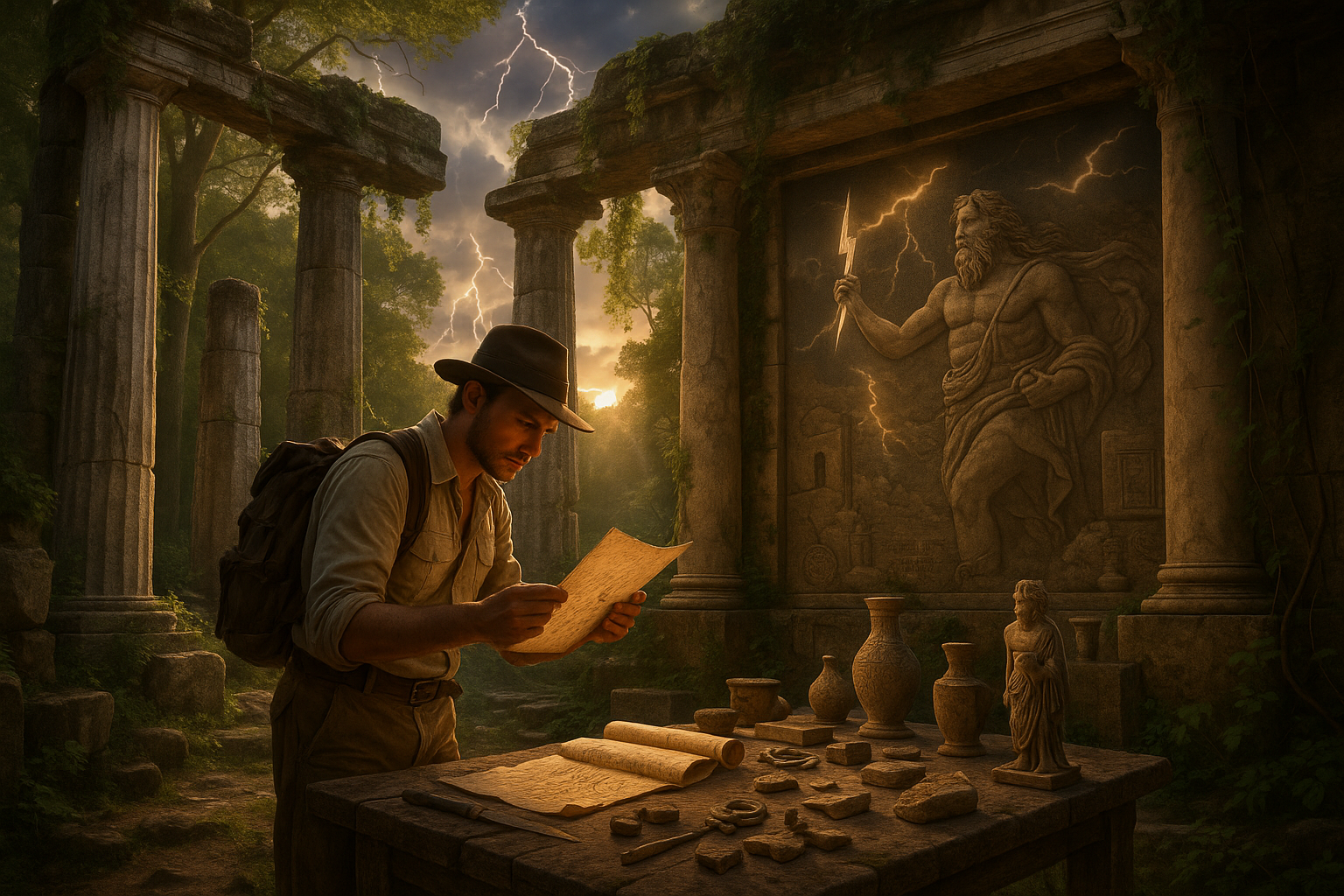Ball lightning remains one of nature’s most enigmatic phenomena, captivating scientists and eyewitnesses alike with its mysterious glowing spheres that defy conventional physics.
⚡ The Enigmatic Dance of Glowing Spheres
For centuries, people across the globe have reported witnessing luminous, spherical objects floating through the air during thunderstorms. These mysterious orbs, known as ball lightning, have puzzled scientists, sparked folklore, and challenged our understanding of atmospheric physics. Unlike the familiar fork lightning that streaks across storm clouds, ball lightning appears as a glowing sphere that can hover, drift, or even pass through solid objects before vanishing without a trace.
The phenomenon has been documented throughout history, with accounts ranging from medieval manuscripts to modern scientific journals. Yet despite thousands of eyewitness reports, ball lightning has remained frustratingly elusive to researchers. Its unpredictable nature, brief existence, and rare occurrence make it nearly impossible to study under controlled conditions, creating a perfect storm of scientific mystery and speculation.
Historical Accounts: When Lightning Takes Shape
The historical record of ball lightning stretches back centuries, with some of the earliest documented cases appearing in ancient texts. These accounts share remarkable similarities despite coming from vastly different cultures and time periods, lending credibility to the phenomenon’s existence.
One of the most famous early accounts comes from 1638, when a ball of fire reportedly entered a church in Widecombe-in-the-Moor, England, during a thunderstorm. According to witnesses, the luminous sphere killed four people and injured many others before disappearing. Similar reports emerged from various parts of Europe throughout the 17th and 18th centuries, often associated with severe weather events.
Modern Scientific Documentation 📋
The 19th and 20th centuries brought more systematic attempts to document ball lightning encounters. Scientists began collecting witness testimonies with greater rigor, identifying common characteristics that appeared across multiple reports. These consistent features include luminous spheres typically ranging from golf ball to beach ball size, colors varying from white to orange and blue, and durations lasting anywhere from a few seconds to several minutes.
One particularly notable case occurred in 1963 when a commercial airliner crew reported a glowing ball that entered the cockpit through the windshield, traveled down the aisle, and exited through the rear of the aircraft. The incident was witnessed by multiple crew members and passengers, providing rare corroborating testimony from trained observers.
The Science Behind the Spectacle
Understanding ball lightning requires grappling with some of the most complex aspects of plasma physics, atmospheric chemistry, and electrical phenomena. Scientists have proposed numerous theories over the years, each attempting to explain how such a phenomenon could exist within the known laws of physics.
The fundamental challenge lies in explaining how a sphere of glowing energy can maintain its shape and coherence for extended periods without an obvious power source. Traditional lightning dissipates almost instantly, yet ball lightning can persist for seconds or even minutes, suggesting an unusual energy storage mechanism.
Leading Scientific Theories 🔬
Several competing theories have gained traction within the scientific community. The silicon vaporization hypothesis, proposed by researchers from New Zealand, suggests that when lightning strikes soil containing silicon compounds, it vaporizes the material, creating a network of silicon nanoparticles. These particles oxidize slowly, releasing energy in the form of light and heat, potentially explaining the glowing sphere phenomenon.
Another prominent theory involves microwave radiation trapped within a plasma shell. According to this hypothesis, electromagnetic radiation from a lightning strike becomes confined within a sphere of ionized air, creating a self-sustaining cavity that produces the characteristic glow of ball lightning.
The chemical reaction theory proposes that ball lightning results from complex atmospheric chemistry involving ozone, nitrogen oxides, and other reactive species created by electrical discharges. These substances could theoretically produce luminous effects through chemiluminescence, similar to the glow produced by certain chemical reactions.
Characteristics That Define the Phenomenon
Despite the mystery surrounding ball lightning, researchers have identified several consistent characteristics based on witness testimonies and the few documented cases captured on video or photograph. Understanding these features helps separate genuine ball lightning reports from other atmospheric phenomena or misidentifications.
- Size typically ranges from 10 to 40 centimeters in diameter
- Colors span the visible spectrum, with white, yellow, orange, and red being most common
- Duration usually lasts between 1 and 30 seconds, though some reports extend to several minutes
- Movement can be erratic, following air currents, or appearing to move with purpose
- Temperature varies, with some accounts describing intense heat while others report no warmth
- Sound may include hissing, buzzing, or crackling noises
- Disappearance often occurs silently or with a small explosion
The Temperature Paradox 🌡️
One of the most puzzling aspects of ball lightning involves the contradictory reports regarding temperature. Some witnesses describe feeling intense heat from the phenomenon, with accounts of burns or ignited materials. However, other equally credible reports describe ball lightning passing near or even touching observers without causing any thermal sensation whatsoever.
This inconsistency has led some researchers to suggest that multiple distinct phenomena might be grouped under the ball lightning umbrella. Alternatively, the energy distribution within ball lightning might be highly variable, with some instances producing significant heat while others remain relatively cool despite their luminosity.
Laboratory Attempts to Recreate Nature’s Mystery
Scientists have made numerous attempts to create ball lightning in laboratory settings, hoping that controlled reproduction might unlock the secrets of this natural phenomenon. While these experiments have produced intriguing results, none have definitively recreated ball lightning with all its documented characteristics.
Russian scientist Pyotr Kapitsa conducted some of the earliest laboratory experiments in the 1950s, using high-frequency electromagnetic radiation to create glowing spheres in various gases. Though these experiments produced luminous effects, the resulting phenomena lacked the stability and longevity associated with natural ball lightning.
Recent Experimental Breakthroughs ⚗️
More recent experiments have yielded more promising results. In 2006, Brazilian researchers accidentally captured ball lightning on video during a thunderstorm observation. The spectrum analysis of the glowing sphere showed evidence of silicon, oxygen, and iron, lending support to the silicon vaporization hypothesis.
Chinese researchers have successfully created ball lightning-like objects in laboratory conditions by discharging electrical currents through silicon wafers submerged in water. The resulting spheres exhibited many characteristics of natural ball lightning, including sustained luminosity and coherent structure lasting several seconds.
Japanese scientists have explored the role of microwave radiation in creating and sustaining plasma spheres. Their experiments produced stable glowing orbs that could persist for extended periods within specially designed microwave cavities, demonstrating that electromagnetic confinement might play a role in natural ball lightning.
Separating Myth from Reality
The mysterious nature of ball lightning has inevitably attracted its share of folklore, misconceptions, and exaggerated claims. Distinguishing genuine ball lightning reports from other phenomena or fabrications remains a critical challenge for researchers attempting to study this elusive occurrence.
Many alleged ball lightning sightings can be explained by more conventional phenomena. St. Elmo’s fire, a corona discharge that produces a glowing effect around pointed objects during thunderstorms, is frequently mistaken for ball lightning. Similarly, afterimages from bright lightning flashes can create the illusion of floating luminous spheres in observers’ vision.
Common Misidentifications 👁️
Several natural and artificial phenomena bear superficial resemblance to ball lightning descriptions. Reflections from windows or wet surfaces during storms can create glowing effects that appear to float or move independently. Lightning striking power lines or transformers can produce bright, spherical explosions that witnesses might interpret as ball lightning.
Meteorological phenomena such as sprites, jets, and elves—electrical discharges that occur in the upper atmosphere during thunderstorms—sometimes get conflated with ball lightning reports. While these phenomena involve electrical activity and produce luminous effects, they occur at much higher altitudes and exhibit distinct characteristics.
The psychological aspect of witnessing unusual phenomena during stressful situations like thunderstorms cannot be discounted. Human memory and perception can be unreliable, particularly during frightening or surprising events. This doesn’t invalidate all ball lightning reports, but it does emphasize the importance of corroborating evidence and multiple witnesses.
The Role of Technology in Modern Research
Advances in technology have revolutionized how researchers approach the study of ball lightning. High-speed cameras, spectrum analyzers, and sophisticated sensor networks now make it possible to capture detailed data about transient atmospheric phenomena that would have gone unrecorded in previous decades.
Lightning detection networks, originally designed to track conventional lightning strikes, have been expanded to monitor for unusual electromagnetic signatures that might indicate ball lightning formation. These systems can triangulate the location of electrical events and alert researchers to investigate promising cases.
Citizen Science and Crowdsourced Data 📱
The ubiquity of smartphones equipped with cameras has transformed ordinary citizens into potential scientific observers. Many ball lightning sightings are now immediately documented with photographs or videos, providing valuable data that was previously impossible to obtain. Social media platforms enable rapid sharing and analysis of these observations, allowing researchers to collect information from witnesses while memories remain fresh.
Several research institutions have established online portals where individuals can report ball lightning sightings and upload associated media. These crowdsourced databases help scientists identify patterns, map occurrence frequency, and analyze the conditions under which ball lightning appears most commonly.
Safety Considerations and Practical Advice
While ball lightning remains rare, understanding how to respond if you encounter this phenomenon could prove important for personal safety. The unpredictable nature of ball lightning means that caution should always take precedence over curiosity.
If you witness what appears to be ball lightning, maintain a safe distance and avoid attempting to touch or interact with the phenomenon. Some historical accounts describe ball lightning exploding with considerable force, while others report electrical shocks from contact. Though many encounters prove harmless, the potential for danger exists.
What to Do During an Encounter ⚠️
Move away calmly without making sudden movements that might disturb air currents, as some researchers believe ball lightning may follow drafts or air flows. Seek shelter indoors if possible, following standard lightning safety protocols. If the ball lightning enters an enclosed space with you, avoid corners and metallic objects while moving toward the nearest exit.
Document the experience if you can do so safely. Take photographs or video from a distance, note the time, location, weather conditions, and the phenomenon’s behavior. This information could prove valuable to researchers studying ball lightning. Report your observation to relevant scientific organizations or meteorological services.
The Future of Ball Lightning Research 🔮
Despite centuries of reports and decades of scientific investigation, ball lightning continues to guard its secrets jealously. However, the convergence of improved detection technology, computational modeling capabilities, and increased public awareness suggests that significant breakthroughs may lie ahead.
Advanced plasma physics simulations running on powerful computers now allow researchers to model conditions that might produce ball lightning-like phenomena. These simulations can test hypotheses that would be impractical or impossible to verify through physical experiments, accelerating the pace of theoretical development.
International collaboration among research institutions has intensified, with scientists sharing data, coordinating observation networks, and pooling resources to tackle this persistent mystery. The formation of dedicated ball lightning research groups signals growing recognition that solving this puzzle requires sustained, focused effort.
Why Ball Lightning Matters Beyond Curiosity
Understanding ball lightning extends beyond satisfying scientific curiosity. The phenomenon potentially holds insights into plasma physics, atmospheric chemistry, and electrical phenomena that could have practical applications. Knowledge gained from ball lightning research might inform technologies ranging from energy storage to fusion power.
The study of ball lightning also demonstrates the importance of investigating phenomena that don’t fit neatly into established scientific frameworks. Throughout history, mysterious observations that challenged conventional understanding have led to revolutionary discoveries. Ball lightning may represent a similar opportunity for advancing scientific knowledge.
Moreover, solving the ball lightning mystery could improve our understanding of lightning behavior more broadly, with implications for aviation safety, power grid protection, and building design. The unpredictable nature of atmospheric electrical phenomena continues to pose risks that better comprehension might help mitigate.
Illuminating the Path Forward ✨
Ball lightning stands at the fascinating intersection of observed reality and unexplained phenomena. The thousands of credible reports spanning cultures and centuries make it clear that something remarkable occurs during certain thunderstorms. Whether one unified explanation will eventually account for all ball lightning reports, or whether multiple distinct phenomena share similar appearances, remains to be determined.
The journey to understand ball lightning exemplifies the scientific method at its finest—patient observation, rigorous hypothesis testing, and gradual refinement of theories based on accumulating evidence. While definitive answers remain elusive, each new observation, experiment, and theoretical advance brings us incrementally closer to unraveling this atmospheric enigma.
As technology continues to advance and our understanding of complex physical systems deepens, the complete explanation for ball lightning may finally emerge from the shadows. Until that day arrives, this glowing mystery will continue to captivate imaginations, challenge scientists, and remind us that nature still holds secrets waiting to be discovered. The electrifying phenomenon of ball lightning invites us to remain curious, skeptical, and open to possibilities that stretch the boundaries of our current knowledge.
Toni Santos is a visual storyteller and artisan whose creations celebrate the poetry of the natural world. Through his thoughtful artistic lens, Toni captures the elegance of botanical forms, transforming them into meaningful expressions of symbolism, resilience, and timeless beauty.
His journey is deeply rooted in a passion for flora and the mysteries they carry. From the shape of a petal to the curve of a vine, each design Toni brings to life reflects a deeper narrative — one of growth, transformation, and harmony with nature. Whether crafting symbolic floral jewelry, enchanted botanical illustrations, or seasonal visual studies, Toni’s work evokes the quiet magic found in Earth’s most delicate details.
With a background in handcrafted artistry and visual design, Toni blends technique with intention. His creations do more than decorate — they speak, often inspired by ancient meanings behind flowers, the cycles of the seasons, and the invisible bonds between nature and spirit.
As the creative voice behind Vizovex, Toni shares this botanical journey with the world, offering curated stories, handcrafted collections, and thoughtful articles that help others reconnect with nature’s symbolism and artistic essence.
His work is a tribute to:
The quiet power of flowers and their messages
The art of visual symbolism in everyday life
The beauty of slowing down to see what’s hidden in plain sight
Whether you’re an artist, a nature lover, or someone drawn to the deeper meanings behind the natural world, Toni welcomes you to explore a space where aesthetics meet soul — one petal, one story, one creation at a time.





